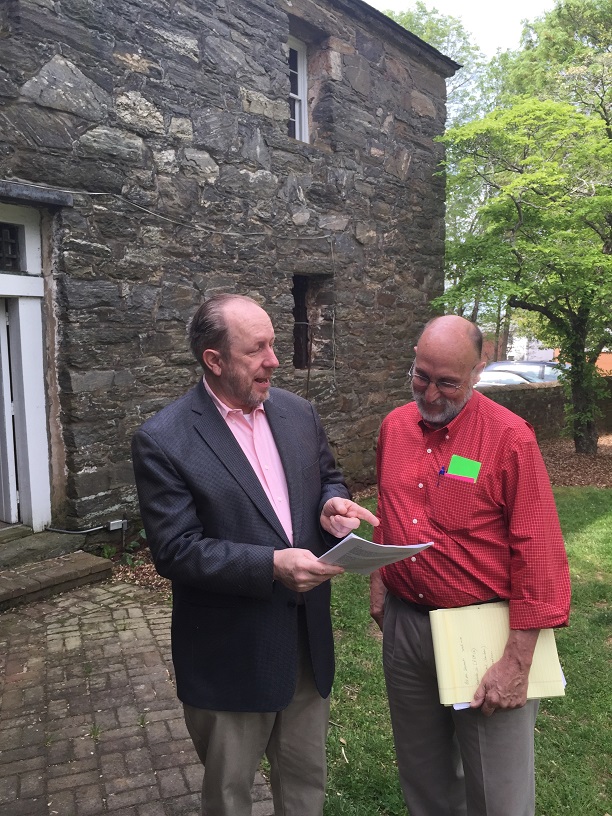
In the fall of this year, the Goochland County Historical Society will be publishing the 45th volume of our magazine. In commemoration of this, we will be posting a few articles on the blog from the back issues. Our first post will be the first article printed in Volume 1, No. 1, a short history of the county by Helene Barret Agee, the first Society historian.
HISTORICAL SKETCH
Goochland County, named for Sir William Gooch, Lieutenant Governor of Virginia from 1727 to 1749, was formed in 1728 from Henrico, an original shire of the Virginia Colony. The original boundaries of Goochland were from Tuckahoe Creek, on both sides of the James River, west as far as the English King’s Dominion extended. From Virginia were formed the states of Ohio, Kentucky and parts of Tennessee. The present boundaries of Goochland are: Tuckahoe Creek on the east, the James River on the south, Fluvanna County on the west and portions of Louisa and Hanover Counties on the north. The county’s land area consists of 289 square miles. The highest elevation is 520 feet, taken at Shannon Hill, the lowest elevation 110 feet, taken at the point where Tuckahoe Creek joins the James River.
Goochland’s present courthouse is believed to be its third. It was “received” as completed on August 20, 1827, by the Commissioners for the County. The county has had several jails. The last was built of stone and is still standing. The brick wall around the present Courthouse Square was built in 1840.
By virtue of inheritance, Goochland claims Manakintowne, on the south side of the James River where the Huguenots settled in 1700. By the same token the county fell heir to the three original Monacan Indian Village sites namely, Mowhemencho, Massinacak and Rassawek.
Thomas Jefferson was born at Shadwell in Goochland County on April 13, 1743. When Albemarle was formed from Goochland on October 16, 1744, Shadwell then fell within the borders of the new county and Albemarle inherited this historic site. Thomas Jefferson spent his early childhood at Tuckahoe, also in Goochland, where he was tutored by the Reverend William Douglas and others.
George Washington was the first President of the James River Company which later became the James River and Kanawha Company. The James River and Kanawha Canal, on the south border of Goochland, played an important role in the economic and social life of the county. In the year 1808 the canal was considered one of the most successful internal improvements in the country.
Thomas Mann Randolph, born at Tuckahoe, and James Pleasants, born at Contention, served as Governors of Virginia.
James A. Seddon of Sabot Hill was elected to the First Confederate Congress and later became Secretary of War, Confederate States of America.
Goochland furnished a son for the cabinet of each of the opposing governments during the War Between the States, Edward Bates of Belmont in the cabinet of Lincoln, and James A. Seddon in the Confederate cabinet of Jefferson Davis.
Other members of the Bates family in Goochland also became prominent: Frederick Bates was governor of Missouri from 1824 to 1826; James Bates a member of Congress from Arkansas, and Thomas Fleming Bates a member of the Virginia Convention of 1829.
General Nathaniel Massie (born 1763-died 1813) served with the Goochland Militia. Later moving to Kentucky where his father, Nathaniel Massie, Sr., had been granted lands, he established, in 1791, a village which later became Manchester, one of the four earliest settlements in what is now Ohio. He laid off the town of Chillicothe, and became the first Major General of the 2nd Division, Ohio Militia, when Ohio was admitted as a State, serving until 1810. He held many high offices, including the presidency of the Senate.
During the Revolutionary War Lord Cornwallis and is troops invaded Goochland. They encamped at Thomas Jefferson’s estate, Elk-hill, for ten days and destroyed all barns with contents and appropriated all cattle, sheep and hogs for the sustenance of their army, and all horses capable of service. Colonel Tarleton raided Rock Castle (Queen Anne Cottage) and tore from the walls the Tarleton coat-of-arms and carried it away. Upon retiring from the County, Lord Cornwallis admired an imposing view overlooking the James River and declared that if he should ever reside in America this would be his choice for a home site. This location has since been known as Cornwallis’ Point.
On his way to Monticello to visit Thomas Jefferson in 1824, General Lafayette visited Goochland and spent the night at the Courthouse.
During the War Between the States, Colonel Ulric Dahlgren and his troops paid a visit to Goochland, leaving souvenirs at many places, especially Sabot Hill, Dover and Eastwood. Goochland recalls with pride eighteen-year-old James Pleasants who single-handed, “killed one Federal and captured thirteen.”
Those who are interested in Genealogy will be glad to know that Goochland’s official records were not destroyed during “the War”, and that eight counties were formed from Goochland soil since its separation from Henrico on 1, May 1728. These counties are: Albemarle (1744), Cumberland (1749), Amherst (1761), Buckingham (1761), Powhatan (1777), Fluvanna (1777), Nelson (1808), Appomattox (1845). Their early records are available in the Goochland County Clerk’s Office.
Tags: Albemarle, Belmont, Colonel Tarleton, Contention, Dover, Eastwood, Edward Bates, Frederick Bates, General Lafayette, General Nathaniel Massie, Goochland Courthouse, James Alexander Seddon, James Pleasants, James River and Kanawha Canal, Jefferson Davis, Lord Cornwallis, Manakintowne, Rassawek, Sabot Hill, Sir William Gooch, Thomas Fleming Bates, Thomas Mann Randolph, Tuckahoe Plantation, William Douglas






















